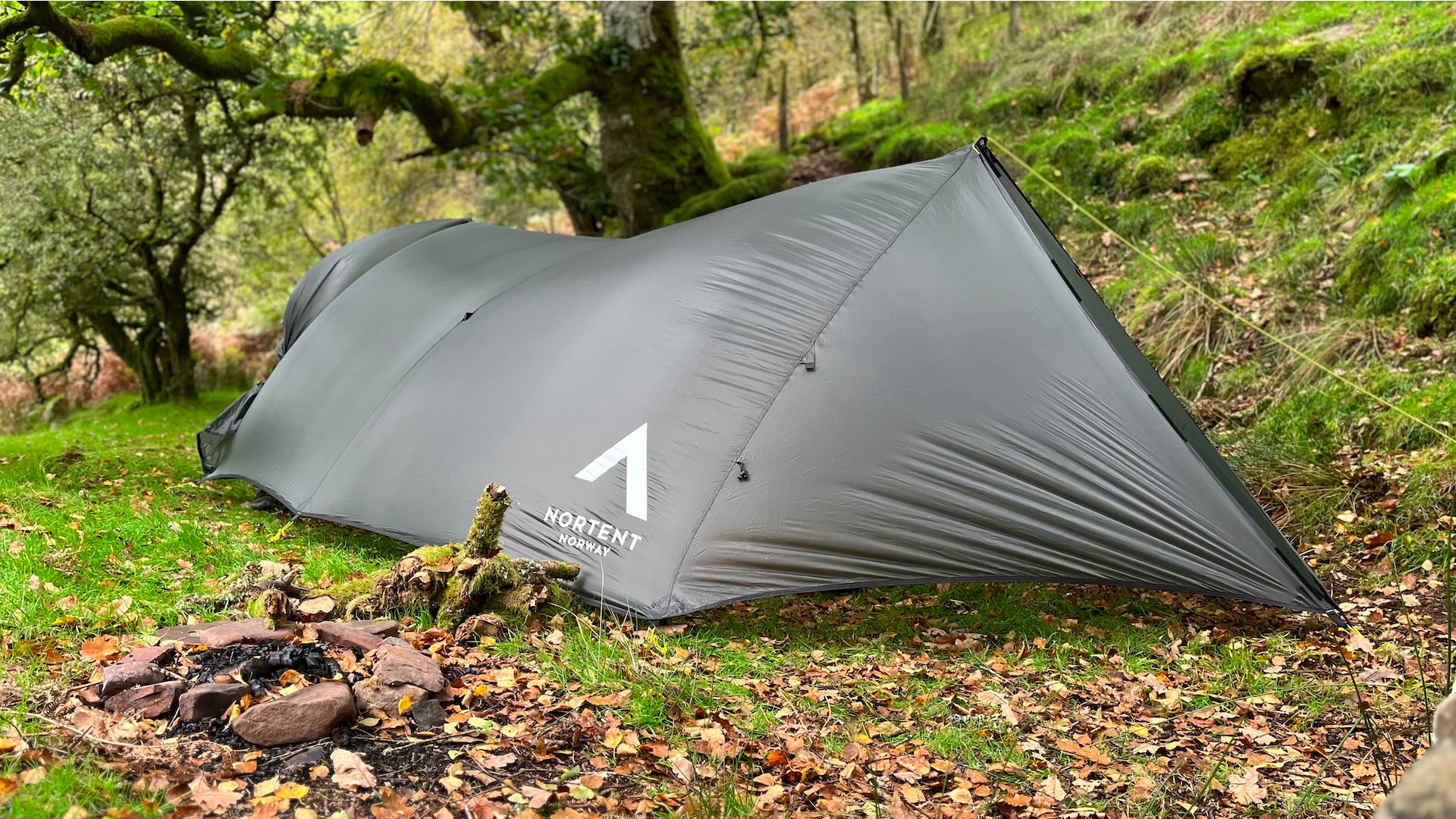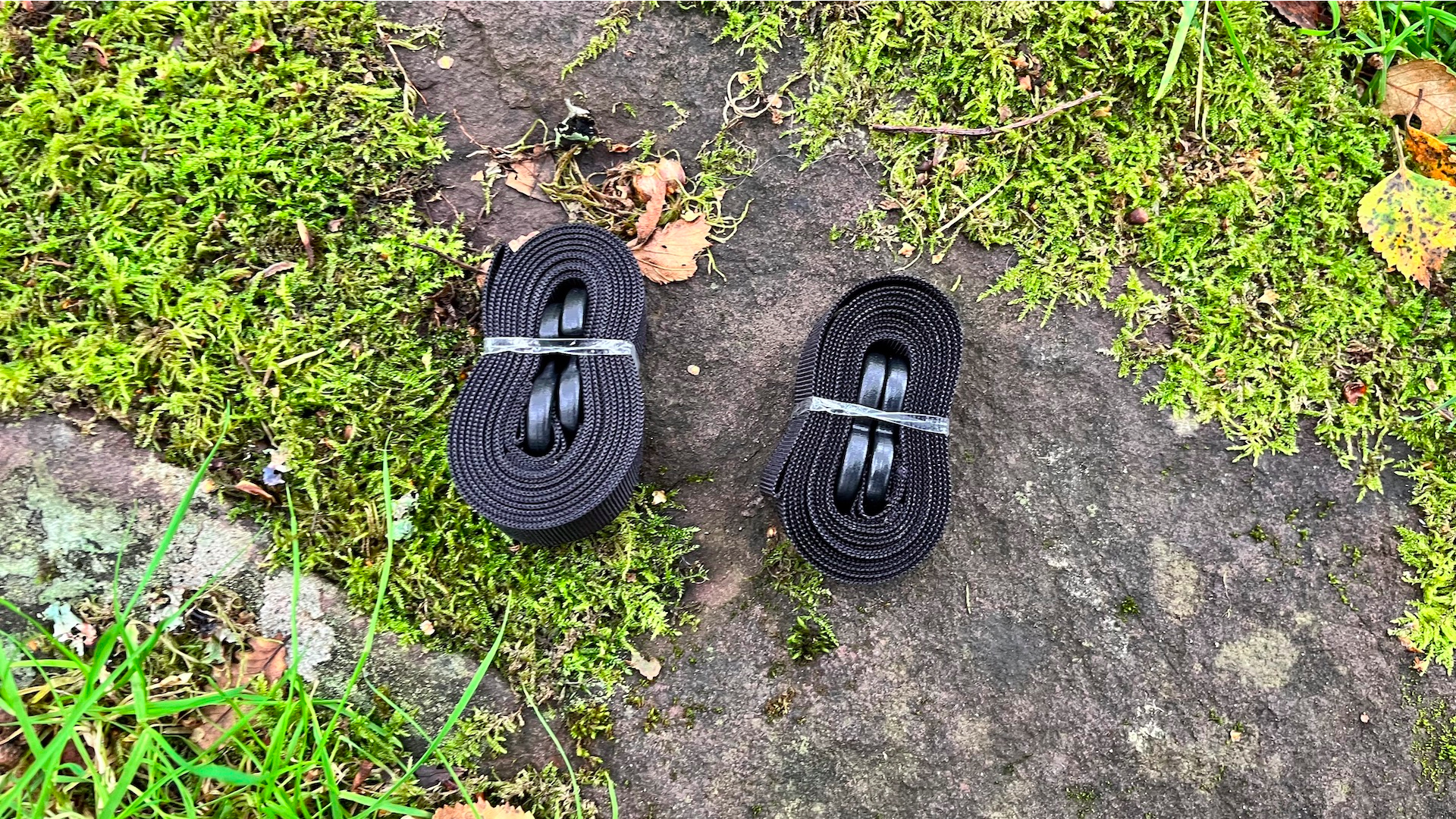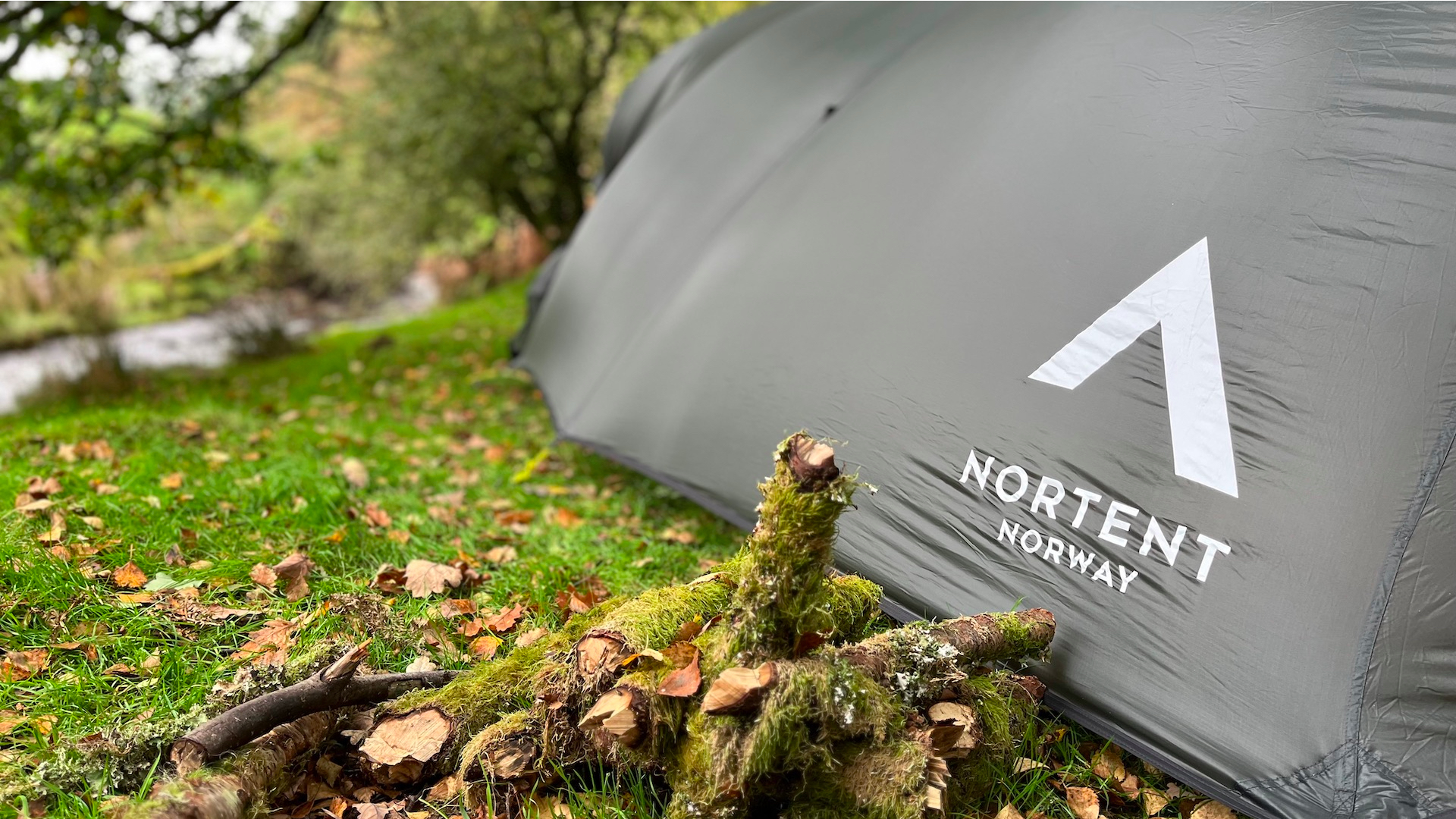
Meet the tester
Nortent Bivuakk: first impressions
The Nortent Bivuakk (available to buy direct from Nortent) is one of the most interesting, versatile and unique shelters I’ve tested in a very long time. Designed by the team that brought us the Nortent Vern 1, one of the best four-season tents of 2023 in my opinion, the Bivuakk is a throwback to tents of old; a simplistic shelter that’s designed to take as little as possible from your experience of being outdoors.
• List price: Around £380 - £770 (depending on the configuration)
• Style: Tarp tent
• Weight: 990g-1,340g
• Rooms: One bedroom, two vestibules
• Compatibility: Available as a three-person tent or up to six as a tarp shelter
It’s a tent designed to let the outside in, and with two huge doors, the ability to open up each side and an optional inner that hangs between the two support poles, I think Nortent couldn’t have delivered a more fitting product off of the back of that brief if they tried.
The Nortent Bivuakk is essentially a multi-use tarp shelter that you can upgrade with various optional extras. When bought directly through Nortent (or via Valley and Peak in the UK), you can opt to add the two carbon support poles and the inner for an extra fee; or you can go completely minimal and just use the tarp.
Unlike most other tarps, though, the Bivuakk isn’t just a square tarpaulin that you can lash from a tree. It’s been cut in order to come with two gigantic doors either side of the tarp that can be connected together via velcro straps, and comes with loops and lashes so you can turn it into a proper triangular-style tent with closable doors.

All in, the tarp weighs just shy of a kilogram (990g) when used on its own, but the inner and pegs will add about an extra 1kg to this setup. The carbon poles, though lightweight, also increase the pack size of this tent quite significantly, which might be difficult to carry if you’ve only got a small pack. If you use trekking poles on your trips anyway, you can use these to avoid having to carry the extra poles, or you can improvise by lashing the tarp to overhanging branches.
Additionally, the Bivuakk comes with a stove jack so you can use a stove inside on the coldest winter nights. Not interested in this feature? Thankfully, the stove flap is easy to seal and stays shut tight, so you can forget it’s even an option if you don’t plan on combining it with a stove.
Depending on the configuration, the Nortent Bivuakk can cost between £380 and £770 for the full setup. This makes it one of the most expensive tarps on the market right now if used as such – or one of the most expensive three-person trekking pole tents out there if used in the tent configuration.
Nortent Bivuakk: in the wild

The Nortent Bivuakk is an incredibly versatile shelter. So much so, I wasn’t sure quite what to do with it the first few times I pitched it. There are so many options, it reminded me of scrolling through Netflix looking for something to watch while your dinner warms up. Each time, though – mainly owing to the fact that I was testing the Bivuaak in a beautiful-but-rainy British autumn – I inevitably ended up pitching it in its tent form, mounting the two carbon support poles at either end and pegging out the inner to keep out the mosquitoes.

Because the inner is an optional inclusion in an otherwise six-person tent, the amount of room you’ve got to play around with in the Bivuakk is very impressive. Truthfully, it’s too big for one person and kit and not something that I’d ever use on a thru-hike or long-distance backpacking trip. But for the occasions when I tested it – one night in the Chilterns and two nights whiling away the hours in Bannau Brycheiniog National Park – it was perfect, and easily the most comfortable shelter I’ve slept in for quite some time.
Pitching it can be a bit of a battle, however. As is the case with shelters like this, it’s held up via tension, so you’ve got to build that up by pegging out the corners before you insert the poles at either end. Unfortunately for me, when I tested the Bivuakk in Bannau Brycheiniog, I did so right next to a river where the ground was incredibly soft and not particularly good at holding the pegs in place. On numerous occasions, the pegs pinged out when I increased the length of the support poles, so I needed to do quite a bit of fiddling to get it right.

What’s more, the huge doors can make the Bivuakk a little drafty. As I tested it on evenings that were comfortably warm, this was never an issue for me, though I wouldn’t use it on proper winter evenings without making the most of the stove jack to keep the inner warm. For the same reason, I also wouldn’t pitch the Bivuakk in exposed environments or anywhere where unexpected gusts could roll in during the night. Therefore, I see the Bivuakk as more for bushcrafters; for people who will be spending a few nights in the same place, such as in woodland, on campsites or in the protection of a valley.
If you find a good spot and are you’re planning to while away a few days in the great outdoors, the Nortent Bivuakk is an excellent choice. The openness of the design and the lightweight materials allow you to connect unobstructed with nature. The sense you get is that you’re a part of the outdoors, not just a temporary guest. In my experience, this is a feeling more akin to cowboy camping than it is to tent camping, and it gave me an entirely new appreciation of wild camping spots that I otherwise knew like the back of my hand.








